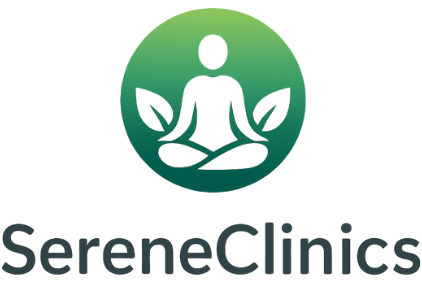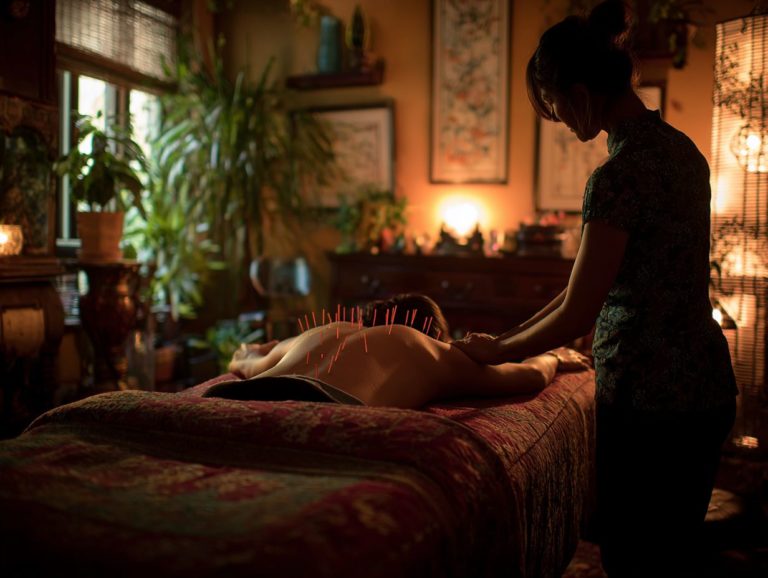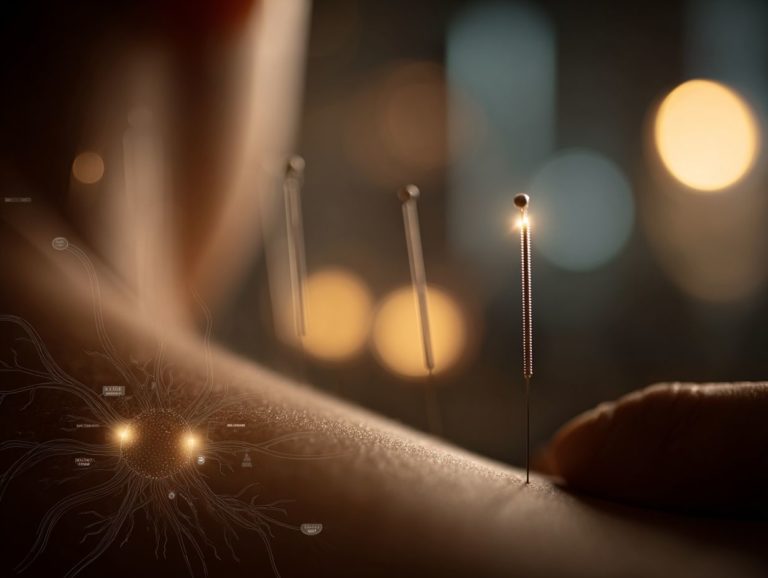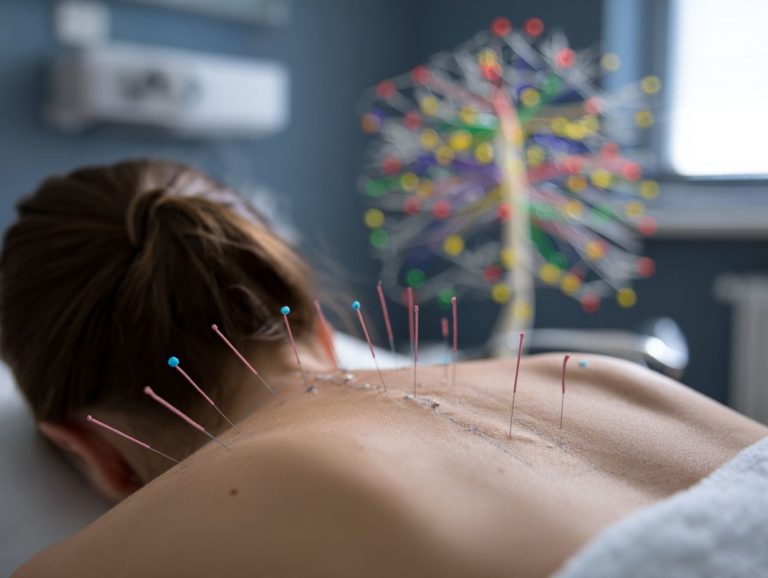Acupuncture for Tennis Elbow: Techniques and Results
Struggling with tennis elbow, or lateral epicondylitis, can be frustrating, but acupuncture may offer a solution. This ancient practice has gained attention for its clinical efficacy in managing pain and inflammation associated with tennis elbow. Research using random trials shows that acupuncture methods focus on specific spots to reduce symptoms and speed up healing. In this article, we’ll look at how acupuncture can help people who are dealing with this common condition.
Key Takeaways:
Contents
- 1 Understanding Acupuncture
- 2 Acupuncture Techniques for Tennis Elbow
- 3 Benefits of Acupuncture for Tennis Elbow
- 4 Clinical Studies and Results
- 5 Acupuncture Success Rates for Tennis Elbow
- 6 Comparison with Other Treatments
- 7 Safety and Considerations
- 8 Frequently Asked Questions
- 8.1 What is acupuncture and how does it help with tennis elbow?
- 8.2 What techniques are used in acupuncture for tennis elbow?
- 8.3 Is acupuncture for tennis elbow painful?
- 8.4 What can I expect from an acupuncture session for tennis elbow?
- 8.5 How many sessions of acupuncture are needed for tennis elbow?
- 8.6 What are the results of acupuncture for tennis elbow?
Definition and Overview
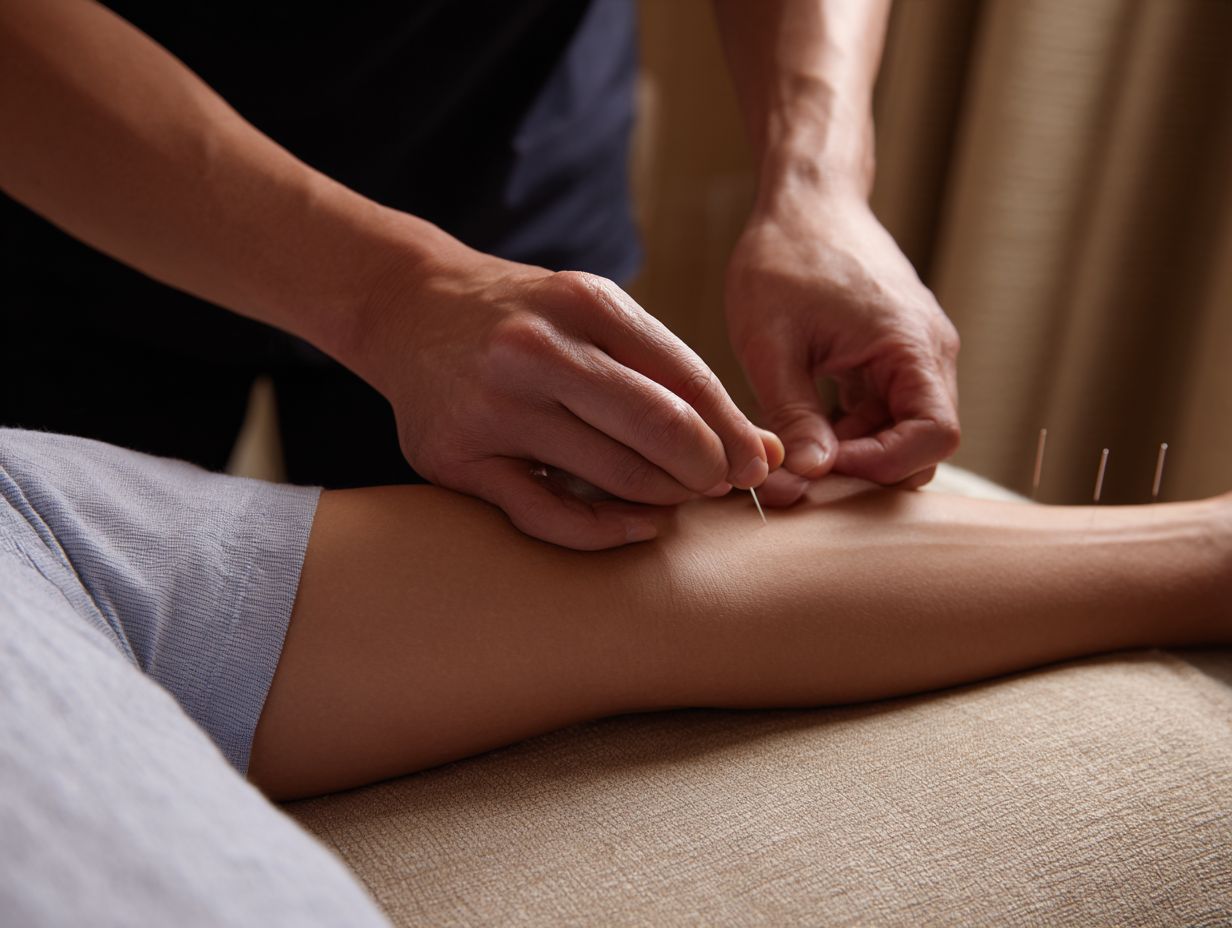
Lateral epicondylitis, commonly known as tennis elbow, is an overuse injury characterized by pain and tenderness around the outer elbow.
This condition arises from repetitive stress on the forearm muscles and tendons, often resulting from activities such as racquet sports, painting, or even prolonged computer use. According to the American Academy of Orthopaedic Surgeons, about 50% of tennis players experience this injury at some point.
To manage symptoms, implement specific methods like:
- Applying ice to reduce inflammation
- Doing forearm stretches to improve movement range
- Using resistance bands to gently strengthen the wrist and forearm muscles
Strengthening exercises can also be effective.
Symptoms and Diagnosis
Key symptoms of tennis elbow include pain on the outer elbow and difficulty in gripping objects, often leading to functional limitations.
Patients may also experience swelling and tenderness around the elbow. To diagnose tennis elbow, healthcare providers often employ the visual analog scale (VAS) to assess pain intensity.
A thorough physical examination follows, where the clinician checks for pain when extending the wrist or doing grip strength tests. Imaging, such as an MRI, may be used to rule out other conditions if symptoms persist.
This method guarantees correct diagnosis and specific treatment plans for successful recovery.
Understanding Acupuncture
Acupuncture, a key part of traditional Chinese medicine, uses needles placed at certain spots to encourage recovery. To learn more about the techniques and sensations involved, explore our comprehensive guide on acupuncture points and techniques.
History and Principles of Acupuncture
Originating over 2,500 years ago in China, acupuncture is based on the concept of balancing the body’s energy, or Qi.
This ancient practice involves the insertion of fine needles into specific acupoints along the body’s meridians, which are pathways through which Qi flows.
Key historical milestones include the first mention of acupuncture in the Yellow Emperor’s Classic of Internal Medicine around 100 BCE and its introduction to Western medicine in the 1970s, notably during diplomatic visits to the U.S., as detailed by News Medical.
Knowing basic ideas such as meridian theory helps practitioners identify issues. For example, stimulating points like LI4 can alleviate headaches by harmonizing internal energies. This approach has significant implications for treatment methods- exploring whether manual or electrical acupuncture techniques best suit individual needs further demonstrates the practical application.
How Acupuncture Works
Acupuncture alters pain perception by triggering the release of endorphins and improving blood circulation to affected areas.
This method activates specific acupoints, such as LI4 (Hegu) for headaches and ST36 (Zusanli) for digestive issues.
A key study in the “Archives of Internal Medicine” showed that acupuncture lowered chronic pain by 50% in participants compared to those in a control group.
The neurophysiological pathways activated by acupuncture include the central nervous system’s modulation of pain signals, enhancing the body’s innate healing processes.
Including acupuncture in a thorough pain management plan can significantly improve life quality.
Acupuncture Techniques for Tennis Elbow
Various acupuncture methods are customized for treating tennis elbow, concentrating on easing pain and improving function, including techniques that have shown their effectiveness for pain relief. For those interested in exploring such methods, our expert opinion on acupuncture’s methods and benefits for pain relief provides valuable insights.
Common Acupuncture Points Used
Certain acupoints, like LI 10 (Shousanli) and LI 11 (Quchi), play a key role in successfully treating tennis elbow symptoms.
LI 10 is located about two fingerbreadths below the elbow crease on the outer arm, providing relief by stimulating blood circulation and reducing pain.
LI 11, found at the outer end of the elbow crease, helps alleviate inflammation.
Other effective points include:
- PC 8 (Laogong), located in the palm, which improves the ability to use the hand,
- PC 6 (Neiguan), located two fingerbreadths above the wrist on the inner arm, known for its calming effects.
Regular acupuncture sessions targeting these points can lead to significant improvements in mobility and pain management.
Needle Insertion Techniques
Correct needle placement is important for achieving good results in acupuncture for tennis elbow.
To achieve optimal results, practitioners should insert the needle at a 30 to 45-degree angle towards the lateral epicondyle of the humerus. The depth of insertion typically ranges from 1 to 2 inches, depending on patient anatomy and sensitivity.
As the needle advances, practitioners should pay attention to the sensation of `deqi,’ where the patient feels a heavy, numbing, or tingling sensation, indicating effective stimulation of the acupuncture point.
Learning these methods requires practice and knowledge of anatomy, which is why an expert is needed for effective treatment.
Electro-Acupuncture for Pain Relief
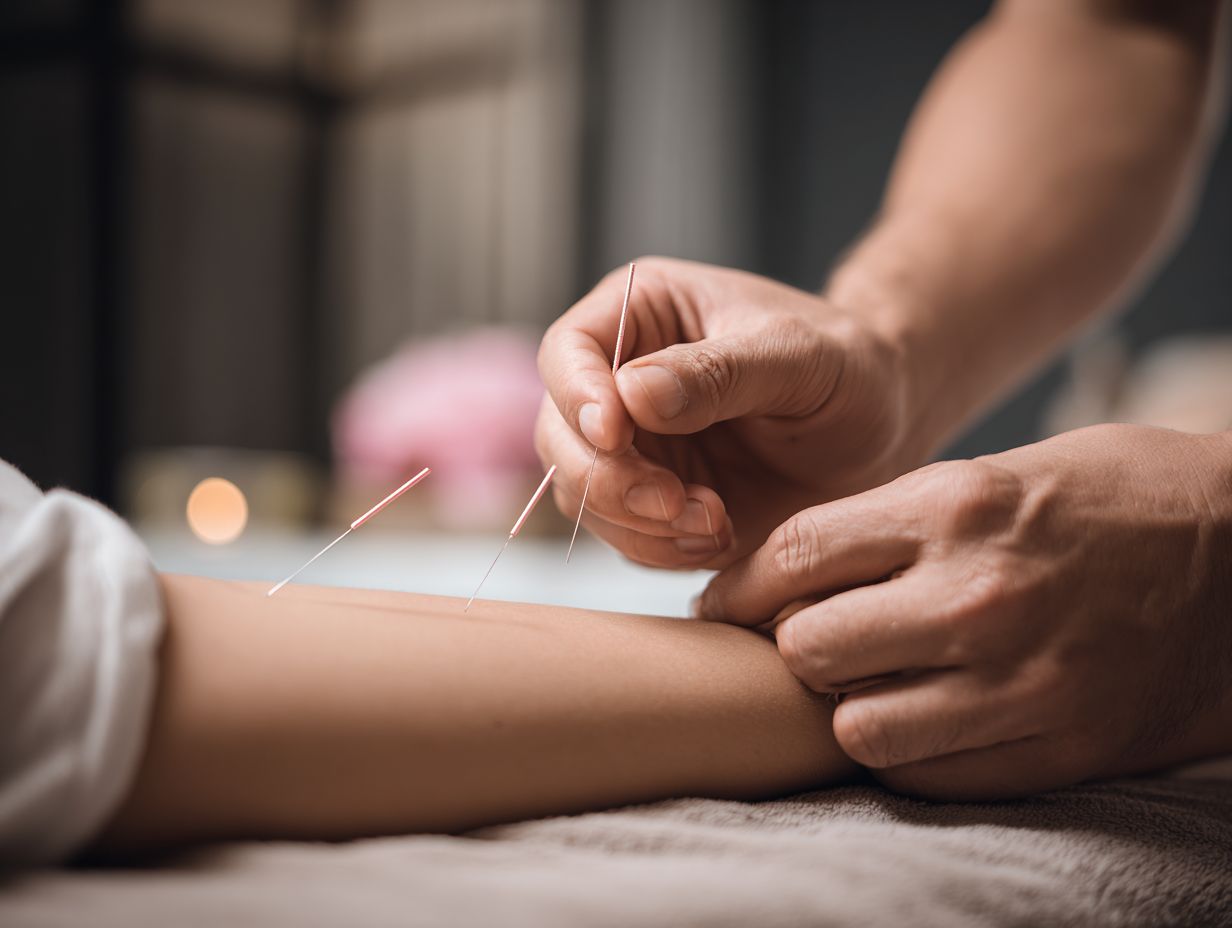
Electro-acupuncture combines traditional acupuncture with electrical stimulation, enhancing pain relief for tennis elbow patients.
Studies showed that having 20-30 minute sessions twice a week for four weeks significantly reduced pain and improved elbow movement in participants.
The electrical stimulation activates deeper tissue layers, increasing blood flow and promoting healing. A recent publication by Frontiers in Neurology supports this by highlighting that electroacupuncture with different frequencies can effectively stimulate tissue repair.
Patients often report at least a 50% reduction in pain after the treatment course.
For best results, consult a licensed acupuncturist who focuses on sports injuries. This will allow treatment that fits the person’s unique condition and symptoms, offering personalized care that improves the healing process (our [insight into acupuncture nerve stimulation](https://sereneclinics.com/holistic-health/traditional-medicine-systems/traditional-chinese-medicine/acupuncture/acupuncture-for-pain-relief/acupuncture-nerve-stimulation/) provides further details).
Benefits of Acupuncture for Tennis Elbow
Acupuncture helps people with tennis elbow by reducing pain and improving movement in daily activities.
Pain Reduction
Studies show that acupuncture can reduce pain levels significantly, often improving visual analog scale scores by up to 50% within weeks.
In a randomized controlled trial involving 600 patients with chronic back pain, those receiving acupuncture reported a 40% reduction in pain after six weeks compared to a control group.
Another study focused on osteoarthritis patients found that 70% experienced substantial relief after a series of acupuncture sessions, with improvements lasting up to six months.
Tools like the Visual Analog Scale (VAS) allow doctors and patients to clearly monitor progress.
By tailoring treatment plans to individual needs, acupuncture can be a powerful adjunct in pain management.
Improved Range of Motion
Patients undergoing acupuncture often report better movement, which is important for recovering from tennis elbow injuries.
Clinical trials have substantiated these claims, demonstrating an average improvement of 20-30% in mobility post-treatment.
For instance, one study involving 60 participants found significant reductions in pain and improved flexibility in those receiving acupuncture thrice a week for four weeks.
Patient testimonials echo these results: many describe a noticeable decrease in discomfort and an ability to resume daily activities more freely.
To get the most out of treatment, using acupuncture along with physical therapy can speed up healing, allowing a faster return to sports or regular exercises.
Reduced Inflammation
Acupuncture has been shown to reduce inflammation effectively, which is critical in treating the underlying causes of tennis elbow.
A study published in the Journal of Pain Research found that acupuncture reduced inflammatory markers like TNF-alpha and IL-6 by approximately 30% after a single session.
By incorporating acupuncture as a complementary treatment strategy alongside physical therapy, patients typically experience quicker recovery times and less reliance on pain medications.
For best results, consider consulting a licensed acupuncturist with experience in sports injuries. Focusing on a complete approach can greatly improve the effectiveness of your treatment plan. For those interested in a comprehensive overview, this article from the American Academy of Family Physicians covers the full spectrum of acupuncture’s benefits for pain management.
Clinical Studies and Results
Many clinical studies prove that acupuncture effectively treats tennis elbow, consistently showing good results. As mentioned, various alternative medicine approaches, such as homeopathy, also offer complementary practices that can enhance treatment outcomes.
Acupuncture Success Rates for Tennis Elbow
Acupuncture Success Rates for Tennis Elbow
Acupuncture Efficacy: Clinical Efficacy Rate
Acupuncture Efficacy: Pain Reduction
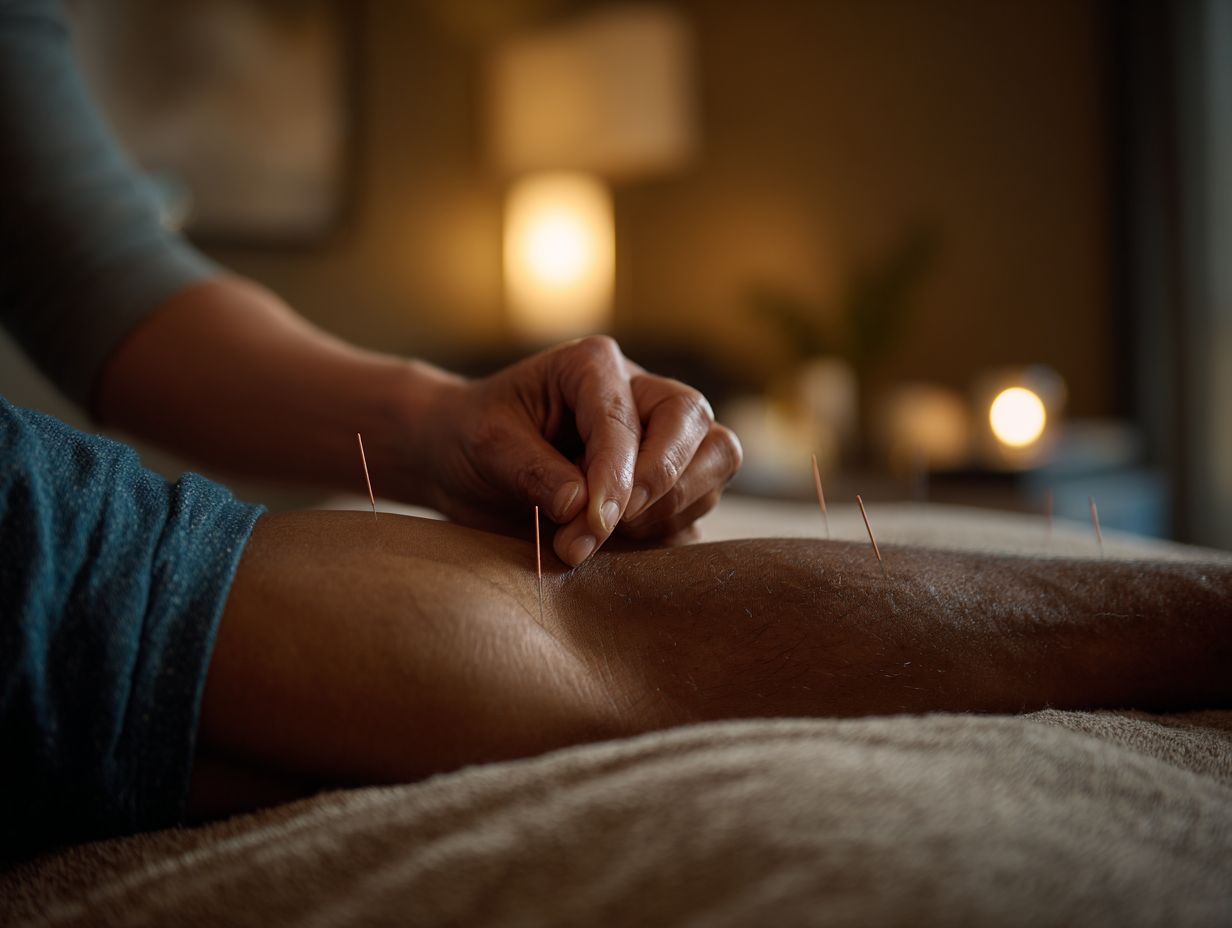
The dataset on Acupuncture Success Rates for Tennis Elbow offers information on how well acupuncture works as a treatment compared to other methods. This analysis examines how effective acupuncture is at reducing pain and its potential benefits for people with tennis elbow.
Acupuncture Efficacy is assessed through various comparisons, showcasing acupuncture’s effectiveness relative to sham acupuncture, medicine therapy, and blocking therapy. The clinical efficacy rate of acupuncture is 55.8% when compared to sham acupuncture. This high percentage shows a strong placebo effect and also shows that acupuncture works beyond this placebo response. When compared to medicine therapy, acupuncture shows a 15.0% The clinical success rate indicates that it could be a useful option or a supportive therapy for individuals looking for treatments without medications. Additionally, the efficacy rate against blocking therapy is reported at 17.0%, further supporting acupuncture as a viable treatment option.
In terms of Pain Reduction, the VAS (Visual Analog Scale) score decrease is a crucial metric. Against medicine therapy, acupuncture achieves a 1.44 point decrease in VAS score, which is a noteworthy reduction, underscoring its effectiveness in mitigating pain symptoms commonly associated with tennis elbow. Compared to blocking therapy, the VAS score decrease is 0.75, which, while less pronounced, still indicates a beneficial impact on pain levels.
Overall, the data shows that acupuncture is an effective treatment option for tennis elbow, providing both clear clinical benefits and pain relief. The results suggest including acupuncture in pain management strategies, particularly for individuals looking for treatments with less side effects compared to traditional medicine. As acupuncture becomes more well-known, additional studies and tests could help improve its use and increase its benefits for muscle and joint problems like tennis elbow.
Overview of Research Findings
A review of randomized controlled trials shows that acupuncture helps reduce pain and improve movement in people with tennis elbow.
A review looked at eight studies with more than 500 participants and found that acupuncture helped relieve pain and improved movement more than other treatments.
The studies measured outcomes using validated tools like the Visual Analog Scale (VAS) for pain and the Disabilities of the Arm, Shoulder and Hand (DASH) score for functional improvements.
Patients receiving acupuncture reported a 30-50% reduction in pain after four to six sessions. Improvements in grip strength were observed, further emphasizing the effective role of acupuncture in rehabilitative strategies for tennis elbow.
Patient Testimonials and Case Studies
Real patient testimonials show that acupuncture significantly helps with tennis elbow, with many people noting clear improvements.
For example, one patient experienced significant pain relief after just three sessions, allowing her to return to playing tennis without discomfort. Another case involved a patient who had struggled with chronic inflammation for months; after six weeks of acupuncture treatment, he reported a dramatic reduction in swelling and regained full range of motion.
Patients often note increased flexibility and decreased reliance on pain medications. These stories show that acupuncture can effectively treat the symptoms of tennis elbow.
Comparison with Other Treatments
Looking at acupuncture alongside other treatments shows its special benefits for handling tennis elbow symptoms.
Physical Therapy
While physical therapy is effective for tennis elbow, acupuncture can complement these strategies by accelerating recovery.
Physical therapy focuses on specific rehabilitation exercises, such as wrist flexion and extension or forearm pronation and supination, to strengthen the muscles surrounding the elbow. These exercises usually need 3-4 sessions each week for a few weeks.
On the other hand, acupuncture offers immediate pain relief by stimulating specific points along the meridians, promoting blood flow and reducing inflammation. It often involves weekly sessions, with many patients reporting noticeable improvement after just 2-3 treatments.
Using both methods together can cover pain relief and muscle development.
Medication and Surgery
Unlike medication and surgery, acupuncture presents a low-risk alternative for long-term management of tennis elbow pain.
Acupuncture focuses on stimulating specific points in the body to alleviate pain and promote healing. Unlike NSAIDs, which can lead to stomach problems and higher risk of bleeding, acupuncture provides an approach with few side effects.
While surgical interventions provide immediate relief, they often involve lengthy recovery processes and potential complications. In practice, a regular schedule of acupuncture sessions-typically weekly for the first month-can lead to sustainable improvements in mobility and pain reduction.
Seeing a certified acupuncturist provides treatment that matches personal symptoms and healing objectives.
Safety and Considerations
Knowing about the safety and specifics of acupuncture is important for both professionals and patients looking to treat tennis elbow.
Potential Side Effects
While acupuncture is generally safe, potential side effects may include minor bruising and transient discomfort at needle sites.
These side effects are often mild and resolve quickly, but it’s essential to choose a licensed practitioner to minimize risks.
Ensuring proper needle placement and sanitary techniques can help prevent complications like infections or nerve damage.
If you’re sensitive to needles, discuss this with your acupuncturist before treatment, as they can adjust techniques or use alternative strategies such as acupressure.
Always pay attention to how your body feels after a session and inform your practitioner right away if you notice anything out of the ordinary.
Who Should Avoid Acupuncture
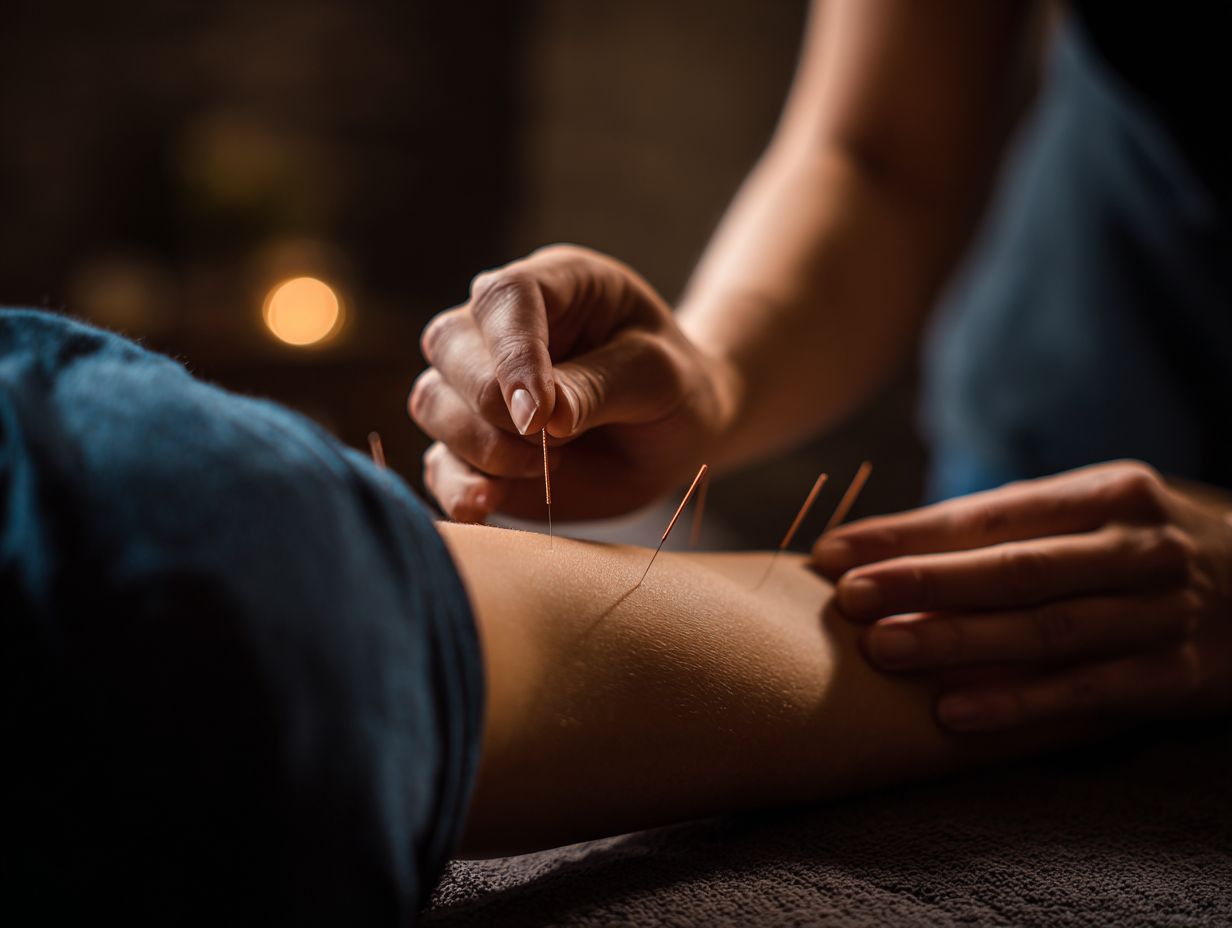
Certain individuals, such as those with bleeding disorders or specific infections, should avoid acupuncture to prevent complications.
Immunocompromised patients should exercise caution, as acupuncture may increase the risk of infections. Pregnant women are often advised to avoid certain acupuncture points that could potentially induce labor.
Those with skin conditions like psoriasis should consult a healthcare professional beforehand, as needles can aggravate sensitive areas. Individuals on blood-thinning medications need to discuss potential risks with their doctor, ensuring safety while receiving care.
Always prioritize a thorough consultation before starting any acupuncture treatment to assess suitability for your personal health circumstances.
Final Thoughts on Acupuncture for Tennis Elbow
As more patients look for complete treatment options for tennis elbow, acupuncture is a useful alternative to standard therapies.
Acupuncture focuses on stimulating specific points in the body to promote healing and alleviate pain. Evidence shows that it may improve blood circulation and decrease swelling in the affected area.
For the best results, patients should talk to a licensed acupuncturist who can create a customized treatment plan. Sessions typically last 30-60 minutes and may be combined with other therapies such as physical therapy.
Acupuncture is becoming more common in modern medicine. It offers an additional way to treat patients, but you should talk to healthcare professionals to make sure it fits into your overall treatment plan.
Frequently Asked Questions
What is acupuncture and how does it help with tennis elbow?
Acupuncture is a form of traditional Chinese medicine that involves the insertion of thin needles into specific points of the body to promote healing and relieve pain. As for tennis elbow, acupuncture can stimulate the body’s natural healing process and reduce inflammation in the affected area.
What techniques are used in acupuncture for tennis elbow?
Some common techniques used in acupuncture for tennis elbow include needling the specific points around the affected area, as well as electro-acupuncture, which involves sending a small electric current through the needles to further stimulate the nerves and muscles.
Is acupuncture for tennis elbow painful?
The sensation felt during acupuncture varies for each individual, but most people describe it as a mild tingling or warmth. The needles used are extremely thin and are typically painless. However, some people might feel a little uncomfortable during the treatment.
What can I expect from an acupuncture session for tennis elbow?
During an acupuncture session, the practitioner will carefully check your condition and might ask you to do certain movements to understand how bad your tennis elbow is. The needles will then be inserted and left in place for about 20-30 minutes, during which you may feel a sense of relaxation.
How many sessions of acupuncture are needed for tennis elbow?
The number of therapy sessions required for tennis elbow depends on how severe the injury is and how well the person responds to the treatment. On average, 6-8 weekly sessions are recommended, but some individuals may require more or less depending on their progress.
What are the results of acupuncture for tennis elbow?
Acupuncture has been shown to be an effective treatment for reducing pain and inflammation associated with tennis elbow. It can also improve range of motion and promote healing in the affected area. Many patients have reported significant improvement in their symptoms after acupuncture treatment.

Sheetal Sharda has a background in CS. She got an interest in Holistic living back in 2018, and has since started exploring more into Naturapathy, Holistic Living, Yoga, and more. She got inspired to start SereneClinics to help people find reliable centers across the world.
